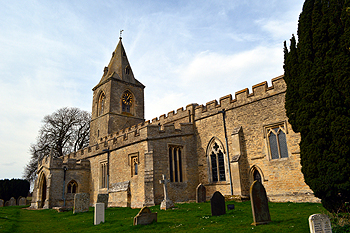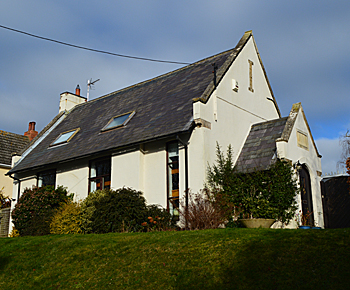Early Education in Yelden

The church from the south-east March 2014
Volume 81 published by Bedfordshire Historical Records Society (2002) is a series of episcopal visitationsundertaken in the first twenty years of the 18th century, edited by former County Archivist Patricia Bell. At each visitation a list of questions was sent out in advance, one of which enquired about the provision of schools in each parish. The returns are as follows:
- 1706: "There is no Lecture, School, Almeshouse, or Hospital endowed in this parish".
- 1709: "A Charity schole set up by the present Incubent [Paulet Saint John, Vicar1706 to 1732], but at pleasure, where all the poor children of the parish are taught to read, and say their Cathechism".
- 1717: "A School for the poor children, establish and subsisting by the Present Incumbent. About 14 or 15 children taught to write, read and Church Catechism".
In 1818 a Select Committee was established to enquire into educational provision for the poor. This was no doubt prompted, in part, by the recent foundation of two societies promoting education and specifically the building of schools. The Society for Promoting the Lancasterian System for the Education of the Poorwas established in 1808 promoting schools run along the lines pioneered by Joseph Lancaster, who had himself copied those of Dr. Andrew Bell, in which older children taught their younger fellows. The Society was renamed the British and Foreign School Society in 1814,. It was supported by a number of prominent nonconformists, Lancaster himself was a Quaker, and sought to teach a non-sectarian curriculum. In answer to this perceived nonconformist takeover of local education the National Society was formed in 1811 to encourage the teaching of poor children along Anglican lines, including the catechism. The Select Committee sent a questionnaire to all parishes in the country asking for: particulars relating to endowments for the education of children; other educational institutions; observations of parish needs etc. The return from Yelden indicated that there was no daily school though there was a Sunday school for about 45 children. In those days a Sunday School was just that, a school which met on a Sunday, usually in the church or nonconformist chapel or other similar building, teaching more than the religious topics with which they are associated today. The curate, John Bunting stated: "The poor have not the means of education, and are very ready to embrace any plan for the instruction of their children offered to them".
In the country generally the number of schools built continued to grow over the next fifteen years so that by 1833 the government agreed to supplement the work of the two societies, and local benefactors, by making £20,000 per annum available in grants to help build schools. It also prompted another questionnaire to be sent to each parish in England asking for details of local educational provision. The Yelden return stated that there was still a Sunday school, now for 18 boys and 22 girls who "receive gratuitous instruction".
The next national enquiry was in 1846/7 when the Church of England made an enquiry as to all its church schools. This was against the background of a new Whig government which championed secular education and the increasing importance of nonconformists, particularly Wesleyan Methodist, and Roman Catholics in providing schools. The return for Yelden lists the following: a Sunday school for 16 boys and 23 girls; a Sunday school for infants with 22 boys and 20 girls and a daily school for infants for 19 boys ad 18 girls. The return comments: "A house for the teacher of the Infant school is in course of erection, towards which the National Society has granted £45.

The old school February 2014